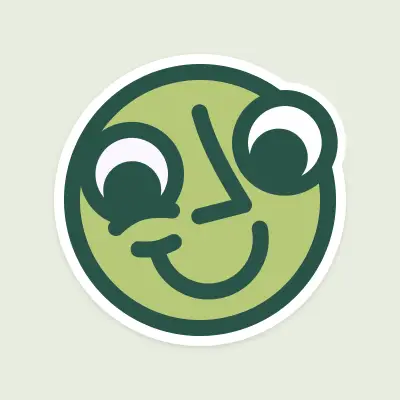Product designer jobs in Berlin: Skills and trends shaping 2025
Berlin’s tech scene is thriving, and product designer roles are at the heart of its innovation. From startups like Koppla to giants like Zalando, companies are hunting for designers who can craft user-centric digital experiences. Drawing from recent job postings in October 2025, this article dives into the most in-demand skills, key responsibilities, and emerging trends shaping product design in Berlin. Whether you’re a seasoned designer or breaking into the field, here’s what you need to know to stand out.
The state of product designer jobs in Berlin
Berlin’s reputation as a tech hub draws talent to roles at companies like Delivery Hero, nerdgeschoss, and Koppla. Recent job listings from October 2025 highlight a demand for designers who blend creativity with technical prowess. Salaries for mid-level roles, like Koppla’s, range from €60k-75k with equity bonuses, while senior positions often command higher pay. Most roles are hybrid, requiring 2+ days in the office, reflecting Berlin’s collaborative tech culture.
Key responsibilities across roles
Product designer roles in Berlin share common threads, focusing on end-to-end design and cross-functional teamwork. Here’s what companies expect:
1. End-to-end design execution. Designers are tasked with owning the full design process—from research and ideation to prototyping and production-ready designs. At Delivery Hero, this means creating UX flows and visual systems for global operations tools. Similarly, nerdgeschoss emphasizes solving complex problems for web and mobile products, often for startup clients.
2. Collaboration with cross-functional teams. Working with engineers, product managers, and stakeholders is universal. Koppla’s designers translate construction management challenges into intuitive interfaces, while Zalando’s team emphasizes customer relationships backed by research. Facilitating workshops and presenting concepts to clients, as seen at nerdgeschoss, is also common.
3. User research and testing Conducting user interviews, usability tests, and leveraging data to refine designs is critical. Senior roles, like those at various companies, require designers to drive decisions with user insights, ensuring products resonate with real-world needs.
Top 5 must-have skills for 2025
Based on October 2025 job postings, these skills dominate Berlin’s product design landscape:
1. Proficiency in Figma Figma is the backbone of design workflows, cited in nearly every job listing. Mastery of Figma, alongside tools like Abstract or Miro for remote collaboration, is non-negotiable. Koppla explicitly calls for experience with systematized design, highlighting the need for organized, scalable design systems.
2. Portfolio showcasing user-centered design A robust portfolio is your ticket to interviews. Companies like Delivery Hero and nerdgeschoss demand portfolios that demonstrate user-centered principles, problem-solving, and attention to detail. Your work should showcase creative solutions across mobile and web applications.
3. Cross-functional collaboration skills Berlin’s agile tech environment values designers who thrive in multidisciplinary teams. Roles at Koppla and Zalando emphasize partnering with engineers and product managers to ship features fast. Facilitating design sprints or workshops, as noted in senior roles, is a plus.
4. 3-5+ years of product design experience Experience requirements vary by role: junior positions ask for 2+ years, mid-level roles seek 3+ years, and senior roles demand 5+ years. Most listings, like those at nerdgeschoss, prioritize experience in product teams delivering web or mobile solutions.
5. User research and testing capabilities From conducting usability tests to analyzing user feedback, research skills are essential. Delivery Hero and senior roles stress leveraging data to validate designs, ensuring products meet user needs and business goals.
Emerging trends in Berlin’s product design scene
Berlin’s product design roles reflect broader tech trends, particularly the integration of AI and data-driven design. While not explicitly mentioned in the job postings, the influence of AI tools like those from Pika Labs or Sora 2 (covered in recent AI video trends) suggests designers may soon incorporate generative AI for prototyping or visual ideation. For now, the focus remains on human-centric design, with companies prioritizing authenticity and user trust.
The rise of hybrid work models is another trend, with Koppla’s 2+ days in-office requirement reflecting a balance between flexibility and collaboration. Additionally, equity-based compensation, like Koppla’s 25% equity bonus, signals startups’ efforts to attract top talent in a competitive market.
How to stand out as a candidate
To land a product designer role in Berlin, tailor your approach to these demands:
- Master Figma and build a design system: Practice creating scalable design systems in Figma to showcase technical expertise. Familiarity with Miro or Abstract can set you apart for remote or collaborative roles.
- Curate a stellar portfolio: Highlight 2-3 projects that show user-centered design, problem-solving, and measurable impact. Include case studies that detail your process from research to final design.
- Hone collaboration skills: Be ready to discuss how you’ve worked with engineers or product managers. Practice facilitating workshops or presenting ideas clearly, as seen in nerdgeschoss’s requirements.
- Brush up on user research: Learn to conduct usability tests and analyze user feedback. Tools like Hotjar or Lookback can help simulate real-world research scenarios.
- Prepare for interviews: Zalando’s process, with its Design Deep Dive and Design Exercise, is typical. Be ready to walk through past projects and solve real-time design challenges, focusing on prioritization and user impact.
The bigger picture: Why Berlin?
Berlin’s tech ecosystem, with its mix of startups and established players, offers a dynamic environment for product designers. The city’s focus on innovation, coupled with a global talent pool, makes it a hotspot for design roles.
The challenge? Standing out in a crowded market. With AI tools reshaping content creation, designers must lean into human judgment and creativity to differentiate their work. Berlin’s product design roles reward those who blend technical skills with a deep understanding of user needs.
#ProductDesign #BerlinTech #UXDesign #Figma #UserCenteredDesign #TechJobs #DesignTrends2025
